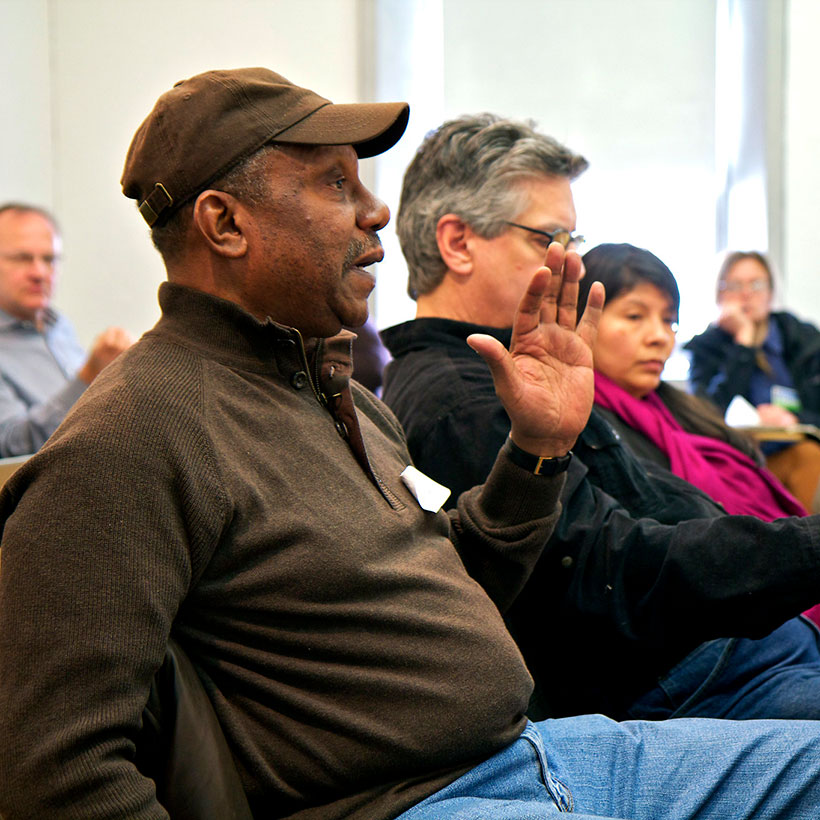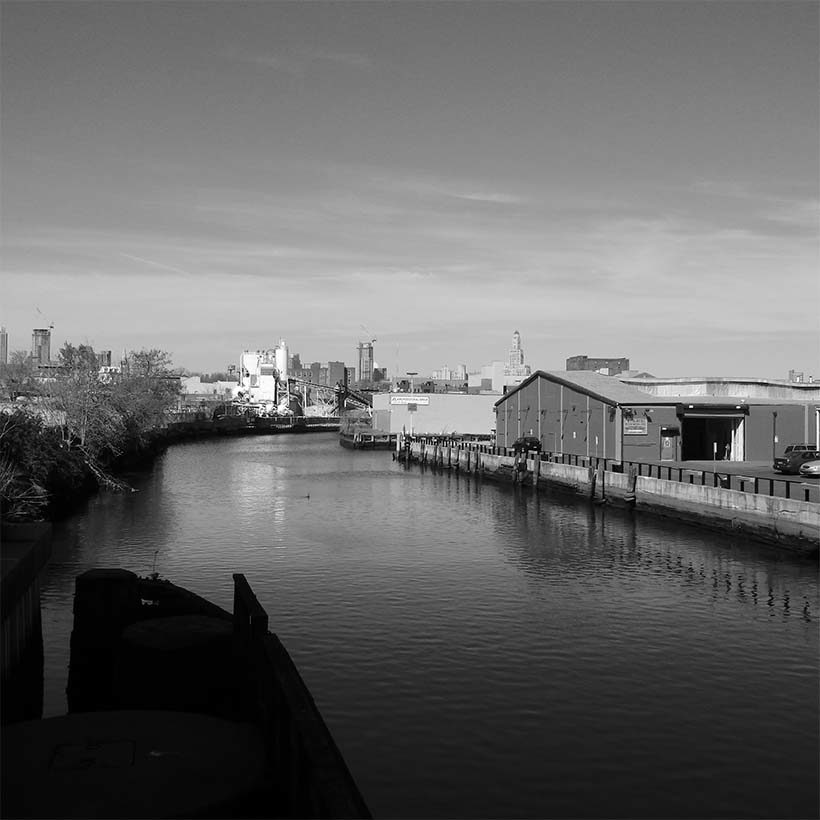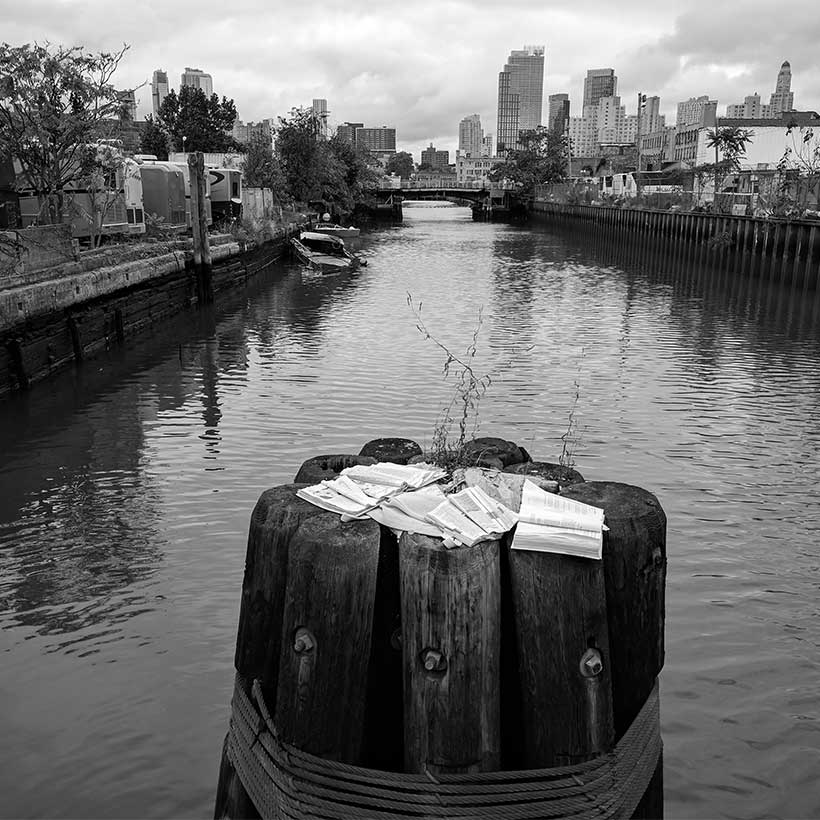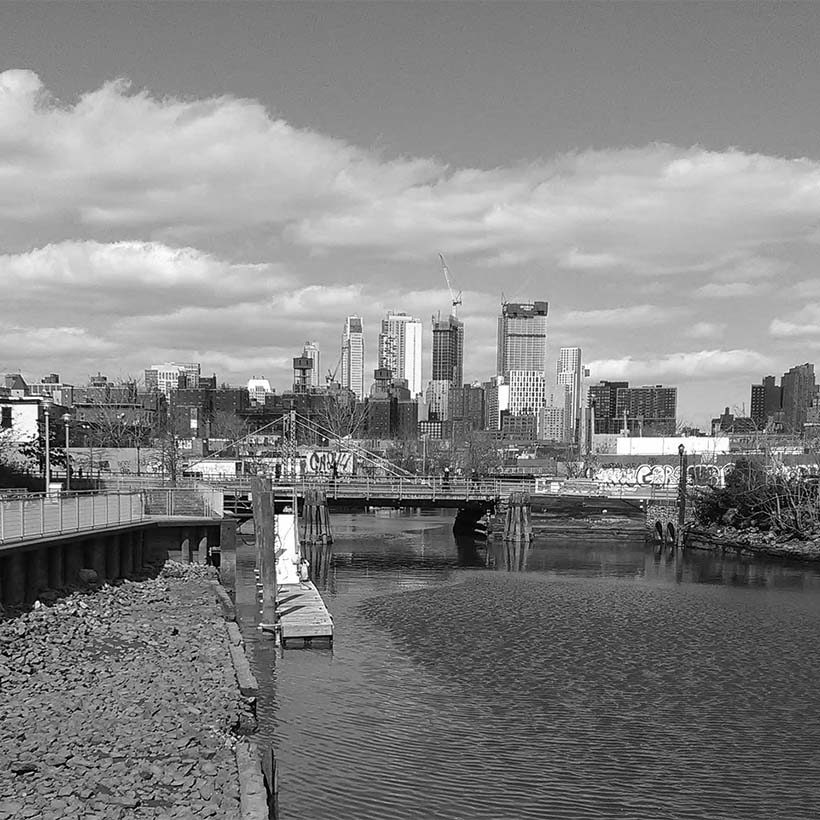Critical Neighborhood Issues Remain in Gowanus Rezoning Plan
Comments to the City Council Committee on Zoning and Franchises
The Municipal Art Society of New York (MAS) has closely examined every neighborhood rezoning under the de Blasio administration. Through our advocacy we have learned that each one presents a unique set of circumstances and challenges. This is most certainly true with the Gowanus Neighborhood Plan (Plan). The proposed rezoning puts the Gowanus community at the doorstep of substantial changes that could transform the neighborhood. It is this potential that warrants the City Council to pay special attention to a host of conditions unique to Gowanus that need to be addressed to ensure the Plan is successful.
MAS recognizes the decades long planning effort by the City and Gowanus community and the inherent challenge in envisioning a future for such a complex neighborhood. There are many encouraging elements to the Plan: an ambitious Waterfront Access Plan, the Gowanus MIX, the prospect of a new 1.5-acre park, a potential new public elementary school, and 100 percent affordable housing on the Gowanus Green site. We also commend Councilmember Lander’s effort to produce a racial equity report to assist in the evaluation and Council discussion of this rezoning. The report builds off an early methodology of the recently passed bill, Intro 1572 (of which CM Lander was a prime sponsor). This report is a good-faith effort to address some of the competing priorities and underlying disparities in Gowanus. Further, it demonstrates the value of having this information readily available for all rezoning applications, as it will soon be required and incorporated into an Equitable Development Data Tool in 2022. However, the report also underscores the importance of expanding the rezoning proposal beyond the limited scope of City Environmental Quality Review (CEQR) and Mandatory Inclusionary Housing (MIH) and reinforces the shortcomings of zoning alone as a tool to reduce equity disparities.
Download Testimony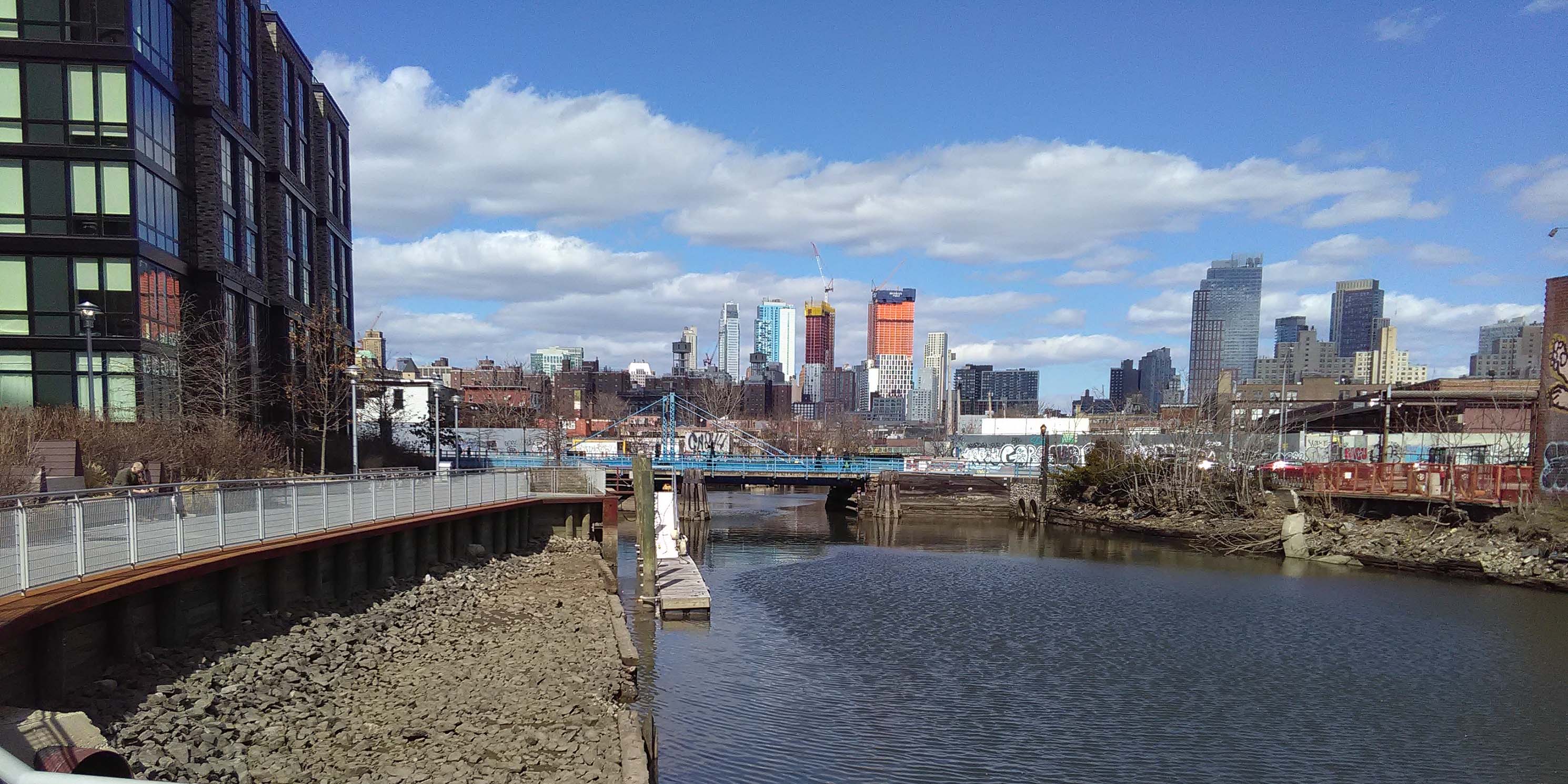
The City has touted the Gowanus rezoning as an opportunity to introduce new affordable housing in a wealthier and whiter neighborhood. While increasing affordable housing is certainly a laudable goal, MIH alone is a blunt tool that increases the production of market rate and affordable housing units without bringing about real housing choice, which is essential in Gowanus. As a result, many New Yorkers will continue to be excluded from Gowanus and other neighborhoods throughout the city, and struggle to remain in their communities of choice. Other policies and investments are needed to address disparities in education, employment, income, and housing choice.
Under the banner of affordability, the rezoning is poised to bring over 8,000 new housing units and 20,000 new residents to Gowanus without assuring that the neighborhood has the infrastructural capacity to take on this level of growth. At this late juncture, other crucial tools remain missing from the proposal. These include a failure to demonstrate a cohesive and transparent level of coordination between the City and the EPA regarding the Gowanus Canal cleanup, lack of specificity regarding incentive strategies to achieve the Gowanus MIX, and no substantial school plan to prevent imminent elementary school overcrowding. Most worrisome, the proposal still omits NYCHA from the affordable housing strategy and the City has not yet committed to funding capital repairs on the campuses directly adjacent to the rezoning area. This is a crucial missing piece in the proposal that cannot be ignored. From a planning perspective, we find that the rezoning follows a familiar path of other neighborhood rezonings, exposing deficiencies in CEQR analyses to forecast future development and evaluate the impacts, and the larger issue of the ineffectiveness of using rezonings as a tool to implement and codify a carefully crafted neighborhood plan. Without real commitments to address fundamental neighborhood planning issues and environmental constraints, and specific strategies to implement community planning goals, the proposal falls short of what we see as sound planning. Sound planning can address systemic issues, from racial to environmental disparities, and increase access to opportunity for all residents regardless of income. Sound planning prepares communities for a more livable future by advancing housing choice, improving water and air quality, acknowledging and mitigating flood risk, and ultimately creating stable neighborhoods with access to quality jobs, great parks and schools, and varied transportation options. Although the Plan, if implemented to reflect community planning goals, may achieve a brighter future for Gowanus, the current rezoning proposal hasn’t gotten it right yet. We urge the City Council to consider our concerns outlined herein in its decision making.
Accuracy of Development Projections
In our extensive coverage of City rezonings and our ongoing CEQR reform advocacy, MAS has demonstrated that future development projections for large-scale neighborhood rezonings are too often unreliable. This is particularly true with “potential” development sites within rezoning areas, which due to unique site conditions or other development encumbrances, are assumed to be less likely to be developed than “projected” development sites within a project build period. Under CEQR, potential development sites are typically not evaluated for environmental impacts.
Following this pattern, the reliability of the development projections identified in the Gowanus rezoning Final Environmental Impact Statement (FEIS) are of great concern. The Reasonable Worst Case Development Scenario (RWCDS) scenario, the maximum development expected under the rezoning, includes a total of 63 projected and 70 potential development sites. The increase in density would leave 90 percent of the lots on the potential development sites with more than 50 percent of their development rights unused. Not only would this make these sites riper for development, if development were to occur, its impacts have not been evaluated in the CEQR analysis. This leaves the Gowanus community to contend with the serious unintentional consequences on schools, stormwater and wastewater infrastructure capacity, transit, and open space.
Our previous work has also shown potential sites and unidentified sites—those within a rezoning area not identified for development at all under CEQR, are often developed through other means, such as zoning lot mergers, development right transfers, and additional zoning waivers and variances. For Gowanus, in addition to the potential development sites, 578 lots within the rezoning area are not identified for future development. This means that in total, 83 percent of the lots in the rezoning area do not factor into the environmental impact evaluation. It would be unreasonable to expect many of these sites to remain undeveloped under the rezoning. The public deserves a more reliable approach to forecasting future development. To avoid past miscalculations of other neighborhood rezonings, we have urged the City to include the full build-out analysis for all 70 potential development sites in the FEIS. However, this analysis has not been done.
Stormwater Management and Infrastructure
The Department of Environmental Protection’s (DEP) recently issued Unified Stormwater Rule (USR), which updates on-site stormwater management requirements citywide, will go a long way to achieving Net Zero combined sewer overflow (CSO) into the Gowanus Canal. This is a huge benefit to the Gowanus area, which has historically been saddled with poor stormwater management infrastructure contributing to increased discharge of raw sewage and polluted run-off into the Canal. The USR increases the amount of stormwater required to be managed on-site and restricts the release rates for all new and redevelopment projects that require a DEP or site connection. The installation of detention tanks on required sites will slow discharges into the Canal. While we are encouraged by the USR, the rezoning must ensure that Net Zero CSO flow is maintained as the area becomes more developed and the impacts of climate change increase over time. Without the USR in place, CSO volumes are expected to increase by 3 million gallons per year.
Because the URS is not slated to go into effect until 2022, no site sewer connection permits should be issued in the rezoning area until that time. In addition, with the recent impacts of Hurricane Ida in mind, we believe the City can do more in Gowanus to reduce present and future flows and improve stormwater quality by including permeable pavement, vegetative buffers, and encouraging the construction of green roofs in the rezoning area. Although the City has not responded to our request to date, with future development, specific inter-agency attention should be paid to incorporate these approaches to improve neighborhood conditions on a wider scale.
Superfund Clean-up Coordination
With the rezoning and ongoing Gowanus Canal Superfund cleanup, effective and transparent coordination between the City and EPA is paramount. We are encouraged by the progress the EPA has made since the clean-up began in November 2020. The City’s responsibilities to improve stormwater infrastructure per the EPA’s 2013 Record of Decision were outlined in the March 29, 2021, EPA Administrative Order, which set a timetable for the City to complete the procurement of property and construction of two CSO storage tanks along the Canal to help prevent recontamination of the Canal after dredging. However, the City, in its July 14, 2021 letter to EPA, stated it will not comply with certain Order requirements, including, but not limited to, deadlines for work, requirements for separate storm sewers, and property locations for the construction of one of the CSO storage tanks (OH-007), and other issues.
In its decision-making, the City Council must ensure the public that all current disagreements between the City and EPA regarding compliance with the Order have been resolved. It is critical that developers comply with municipal stormwater regulations within the Gowanus area to prevent sewer volume from impairing the effectiveness of the new tanks, provide treatment for separated stormwater discharges, perform monitoring of sewer discharges to ensure protection during dredging, perform associated maintenance dredging if needed, and construct a bulkhead on City-owned property to prepare for the second phase of dredging.
School Capacity
Despite new school capacity projects in the area, the influx of new residents in Gowanus will undeniably lead to new district-wide school overcrowding. Throughout the CEQR process MAS has maintained that the impact the rezoning would have on area school capacity has not been disclosed or evaluated. Moreover, the DEIS and FEIS reach conclusions that no adverse impact on school utilization would occur based on the assumption that the School Construction Authority (SCA) will construct a 500-seat school at Gowanus Green. Yet, neither document discloses any demonstrable commitment from the SCA to construct a school.
The evaluation of school utilization in Subdistrict 3, CSD 15 is particularly alarming. Both the DEIS and FEIS reveal that school utilization rates for Subdistrict 3 would increase by 21.1 percent under the rezoning, resulting in a capacity rate of 108 percent. Both factors are considered significant impacts under CEQR.1 In fact, the rezoning exceeds the impact threshold by more than a four-fold margin. However, with the inclusion of the Gowanus Green school’s additional 500 seats, the utilization would be 99.8 percent, 0.2 percent under the CEQR threshold indicating an adverse impact. We urge the City Council to not allow the District to get woefully behind in providing school seats for new students. Particularly if additional sites not evaluated are developed as residential uses. The Plan offers little in terms of concrete plans to alleviate future capacity demand on area schools. To avoid a repeat of the school overcrowding and segregation caused by the 2003 Park Slope Rezoning (ULURP C030194(A) ZMK), the Gowanus proposal should include a proactive, integrated housing and school construction agenda that prioritizes equal opportunity.
The potential elementary school at Gowanus Green is the one school planned under the rezoning. As mentioned, the plan does not come with any demonstrable commitments from the SCA to construct the school, and no zoning or admissions plans are posted at this time. To ensure that the new school contributes to continued area-wide integration, we recommend that:
- DCP coordinate with the Department of Education (DOE) and other city agencies to achieve strategies that continue and expand upon diversity initiatives like DOE’s Diversity in Admission program for a robust set-aside admission plan prioritizing ELL students and students from low-income households or in temporary housing, and
- DOE assesses the potential for the new elementary school to be unzoned. Unzoned schools are general education public schools where priority is not given to students in their school zone but are open to applications from the entire district.
Open Space
MAS is pleased with the level of thought and consideration that has gone into the Waterfront Access Plan (WAP) for the Gowanus Canal. The WAP envisions a waterfront that is accessible, resilient, and includes a variety of active and passive recreational opportunities. However, the plan falls far short in addressing Gowanus’ severe shortage of public open space, which would worsen with the rezoning.
Currently, Gowanus has only 0.34 acres of public open space per 1,000 residents, less than 14 percent of the City goal of 2.5. The proposed rezoning would result in 5.46 acres of new publicly accessible open space including a 1.48-acre park at the Gowanus Green Site and 3.98 acres of publicly accessible waterfront open space. According to the environmental review documents, the combination of limited new open space and an influx of additional residents would cause the area’s passive and active open space ratio to fall by an additional 1.19 percent, thereby creating a significant adverse impact. The area’s active open space ratio would decrease even more, by 3 percent. According to the FEIS, the reduction in active open space will affect the area’s adult and teenager population, which makes up 69 percent of the study area’s population. Although both groups use ball courts and sports fields, the FEIS suggests they may use facilities that provide more individualized recreation such as cycle paths and other jogging paths. We find this conclusion unacceptable.
Due to the current and future shortage of area open space and the importance of accurate analyses to the determination of significant adverse impacts, MAS requests the following:
- A revised proposal that includes significantly more open space within the study area and leads to a meaningful increase in the area’s total and active open space ratios. The Gowanus Canal Conservancy has identified up to 5.7 acres of additional City-owned land where this new public open space could be accommodated. Their proposal must be strongly considered.
- A detailed plan for how the City will ensure that the private sector builds waterfront space that feels continuous and meets the ambitious requirements for recreational space. All too often we have seen waterfront spaces that are disjointed and poorly designed and maintained. This includes the crumbling Whole Foods esplanade along the Gowanus Canal itself.
Fair Housing
While proponents of the Plan assert that it would ensure racial and economic integration, more coordination and sound planning is needed to meaningfully increase housing choice, affordable housing development, and to dismantle segregation. To do so, the City must increase housing choice options for all residents of Gowanus—extremely low-, low-, and middle, and high-income earners—rather than continue to emphasize MIH as the sole tool for advancing middle-income affordable housing units. At the same time, increasing housing choice options and the goals of fair housing require the City to address historic, systemic issues that have led to the current inequities of the Gowanus neighborhood. It can do this by taking proactive steps to expand the housing stock while making equitable investments to address historic discrimination, segregation, and concentrated poverty.
The City cannot plan for new affordable housing in the area without comprehensively addressing the legacy of NYCHA neglect, particularly at the nearby Gowanus Houses, Wyckoff Gardens, and Warren Street Houses complexes. While we do not agree with the City’s decision to exclude them from the rezoning area, we agree with Councilmember Lander that the rezoning must also generate significant investment to meet the capital needs at these campuses.2 To that end, the City needs to commit substantive funding, investments, and improvements to these facilities, and implement place-based and mobility strategies to improve access to opportunity, reduce disparities, and increase housing options, including the choice to stay within the neighborhood.
The exclusion of the NYCHA campuses further discounts the district transfer of development rights model proposed by the Pratt Center for Community Development. This additional zoning tool could have designated NYCHA sites as granting sites and allow for an added revenue source to fund needed improvements, independent of NextGen redevelopment and privatization programs such as PACT/RAD. Because the campuses were not included in the proposal, the City Council should push the City to disclose information concerning the choice not to pursue this additional funding approach for NYCHA improvements.
Southwest Brooklyn IBZ
We are discouraged to see that the Southwest Brooklyn Industrial Business Zone (IBZ) remains excluded from the primary and secondary study areas, leaving potential impacts of the proposed land use actions on this vital employment center unevaluated and unmitigated. Despite MAS’s request, the FEIS failed to include a comprehensive study of the potential impacts of the proposed land use changes on the IBZ. In response to concerns and feedback from business owners in the IBZ and the Southwest Brooklyn Industrial Development Corporation (SBIDC) on the DSOW, in May 2021, DCP released the Gowanus Industrial Business Zone Vision Plan. Although the Vision Plan identifies and outlines opportunities for infrastructure improvements and workforce development, it is a guide that offers optional strategies, not a codified land use plan supported by explicit commitments from the City.
Public Engagement
Effective public engagement is critical to any large-scale neighborhood rezoning. However, the pre-certification ULURP public meetings organized by the DCP in late 2020, offered little new information, and thus were an unfortunate missed opportunity to effectively engage with the community during the pandemic. Participants voiced frustration about the lack of details provided, especially regarding critical infrastructure needs magnified by the pandemic. DCP’s facilitators denied requests for more insight into the DEIS, citing the document’s ongoing development. Prior to these pre-certification meetings, we urged the City to encapsulate input from these meetings in a report in advance of the DEIS release and ULURP certification. This was not done. Without a report, it is difficult to determine the efficacy of the engagement effort and the degree to which the project responds to critical community feedback.
Conclusion
As one of the last two neighborhood rezonings to be certified under the de Blasio administration, we recognize the substantial undertaking and complexities the Gowanus rezoning poses for the City. While there are many elements we find encouraging, the rezoning as proposed is not set up to achieve the most important planning goals for the Gowanus community.
In our examination of other neighborhood rezonings, despite the neighborhood-to-neighborhood nuances, we continue to observe a pattern of missed planning opportunities, flawed environmental impact findings, and inadequate engagement. Over the last eight years, public criticism has focused on the concentration of rezonings in lower-income and communities of color, the administration’s failure to incorporate neighborhood planning strategies, and a lack of data around underlying community disparities and displacement risk.
MAS supports the proposal with the condition that the City commit to addressing the critical outstanding neighborhood issues we have outlined and adopt strategies to implement community-identified goals. This is the best approach to ensure that community planning efforts over the last decade are not overshadowed by the City’s desire to meet MIH goals. We seek transparency in the coordination efforts by the City and the EPA regarding the ongoing environmental remediation process and stormwater infrastructure improvements.
Thank you for the opportunity to comment on this critical neighborhood rezoning.
Notes
- A five-percent increase in school utilization and exceedances of 100 percent utilization are considered significant impacts under CEQR.
- council.nyc.gov/brad-lander

